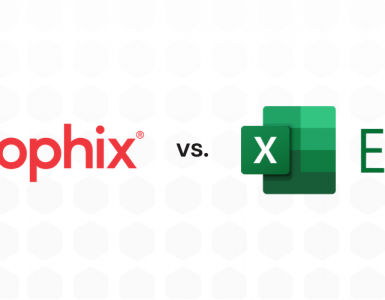“A company’s employees are its greatest asset and your people are your product.” – Richard Branson
It’s no secret that your workforce is one of your company’s greatest assets. They put the work in, day in and day out, to deliver on your organization’s goals and mission.
And while good employees are at the foundation of any successful company, personnel are still one of the most significant costs of running a business.
The COVID-19 crisis has meant that many businesses have had to adjust their revenue expectations and revisit their personnel plans to accommodate this new reality.
And while most organizations have had to drastically scale back their workforce due to widespread closures, other companies, such as distribution centers, grocers, and manufacturers are scaling up to meet increasing demands.
Whether you need to scale back or scale up your workforce, you’ll need to revisit your personnel plans for 2020.
Today, we’ll cover six best practices for putting your people first in these uncertain times.
Eager to get started on personnel planning? Discover how to put your people first in our webinar.
1. Determine Your Current Headcount
Employee costs vary greatly by industry, but they often account for 70% of the company’s operating expenses. The highest-performing organizations know that personnel planning is essential for minimizing operating costs and maximizing the value of each employee.
But you can’t plan where you’re going if you don’t know where you stand.
For many organizations, calculating the size of their workforce is not as easy as it sounds, especially if you rely on temporary workers or independent contractors. Gathering headcount data from your company’s payroll and/or HRIS system can be difficult, as it’s often spread over several disparate solutions.
Not to mention that these systems are often unable to account for people’s intent to leave or retire, take paid time off, maternity leave, or sick leave. So, at any point in time, your headcount data may be out of date.
The first step to creating an accurate personnel plan is to leverage a tool that can integrate your data sources in real-time, such as Corporate Performance Management (CPM) software. This will provide you with the most current picture of your company’s workforce.
2. Forecast Attrition
Market volatility and the stress of living through a pandemic are further exacerbating the difficult task of forecasting workforce attrition. Employees may resign to homeschool their children or support their partners who are working from home.
And without historical data to inform attrition forecasts, it can be hard to get a clear picture of your company’s true internal workforce supply.
High-performing organizations are leveraging data analytics to determine the risk of turnover, retirement, and workforce mobility. They also evaluate external economic conditions to predict what employees might do, which is particularly relevant during the COVID-19 crisis.
Taking into account these variables will help you determine your workforce supply risk, and if desired, allow you to target high-risk areas and positions for retention.
Get a clear picture of your company’s workforce with our webinar on personnel planning.
3. Forecast Workforce Demand
As the reality of the current situation sets in, it’s important to ask yourself, how will my workforce needs change over the coming weeks, months, and years?
If you can answer this question accurately, you could save a veritable fortune in employee expenses and ensure that your organization has enough staff to maintain productivity and customer satisfaction.
At the core of successful personnel planning are driver-based processes. These drivers should be unique to your business, as the goal is to identify quality drivers that link personnel to business performance.
For example, call centers could use calls received, warehouses could use trucks unloaded, and professional services firms could use hours billed as personnel drivers.
And since many organizations have adapted to remote and virtual offices, this process is best facilitated through cloud-based tools that allow companies to set up workflows and collaborate in real-time on a single platform.
4. Perform a Workforce GAP Analysis
A workforce plan doesn’t always have to involve hiring, especially for those companies profoundly affected by the pandemic. The goal is to get the right people in the right positions at the right time. And quite often, this involves transferring, retraining, downsizing, and outsourcing.
A GAP analysis will help you figure out your headcount deficit at specific points in time. In turbulent times such as these, GAP analysis can assist your Office of Finance in making personnel recommendations as economic, market, and hiring conditions change.
5. Run Workforce Planning Scenarios
Closely related to GAP analysis is the process of running workforce planning scenarios. Of all the best practices for personnel planning, scenario planning is perhaps the most critical in times of change and upheaval.
Some variables to consider when preparing your personnel scenario analysis are:
- Ratio of contractor and outsourced workers to in-house employees
- Ratio of full-time to part-time workers
- Relocation, openings, and closing of operations
- Pay strategy and merit increases
- Reorganizations, promotions, and lateral transfers
- Changing in productivity, ramp-up time, and driver ratios
The goal with personnel planning is not to find your optimal workforce mix, rather it’s to understand the actions you can take when certain situations arise based on a well-structured model.
CPM software is best suited for scenario analysis because it accelerates planning by bringing together:
- People – Foster an environment of collaboration by identifying, including, and empowering key roles within your company.
- Process – It’s a best practice to map the planning cycle and have regular touchpoints to follow-up on. It is also helpful to employ a tool that can help you drive your processes through workflows.
- Technology – Your technology should integrate with all your business systems and enable you to have a single view of your data. This purpose-built tool should bring together your people and processes to facilitate budgeting, planning, and forecasting processes, while also providing insights to your stakeholders.
Unifying your people, processes, and technology can also reduce organizational risk, which is often a pain point of spreadsheets. And while Excel errors are not necessarily always a cause for concern, rapid scenario planning can compound these errors, affecting the outcomes and the decisions you make from them.
6. Remember the Human Factor in Workforce Planning
Now, more than ever, we need to consider the human factor in personnel planning – people want to work for a company that cares about them. Right now, your employees are doing their best to adapt and thrive under changing and stressful circumstances.
Understanding employees’ motivation and creating a personnel plan that balances the needs of the organization with the needs of your employees will increase morale, motivate your workforce, and enhance customer satisfaction.
Conclusion
Regardless of the size of your company, personnel planning should be a key component of your overall corporate planning process. It will help your organization gain an edge over competitors, increase forecast transparency, and better align your human capital requirements with your business goals.
During the COVID-19 crisis, companies that leverage CPM software will be better equipped to find an optimal personnel strategy that allows them to support their employees while also prioritizing the health of their business.
Get more tips on putting your people first in uncertain times – watch the webinar.
Join our live discussion with Q&A to learn what CFOs around the globe can do to respond to changing conditions and ensure business continuity while improving planning and minimizing risk.







